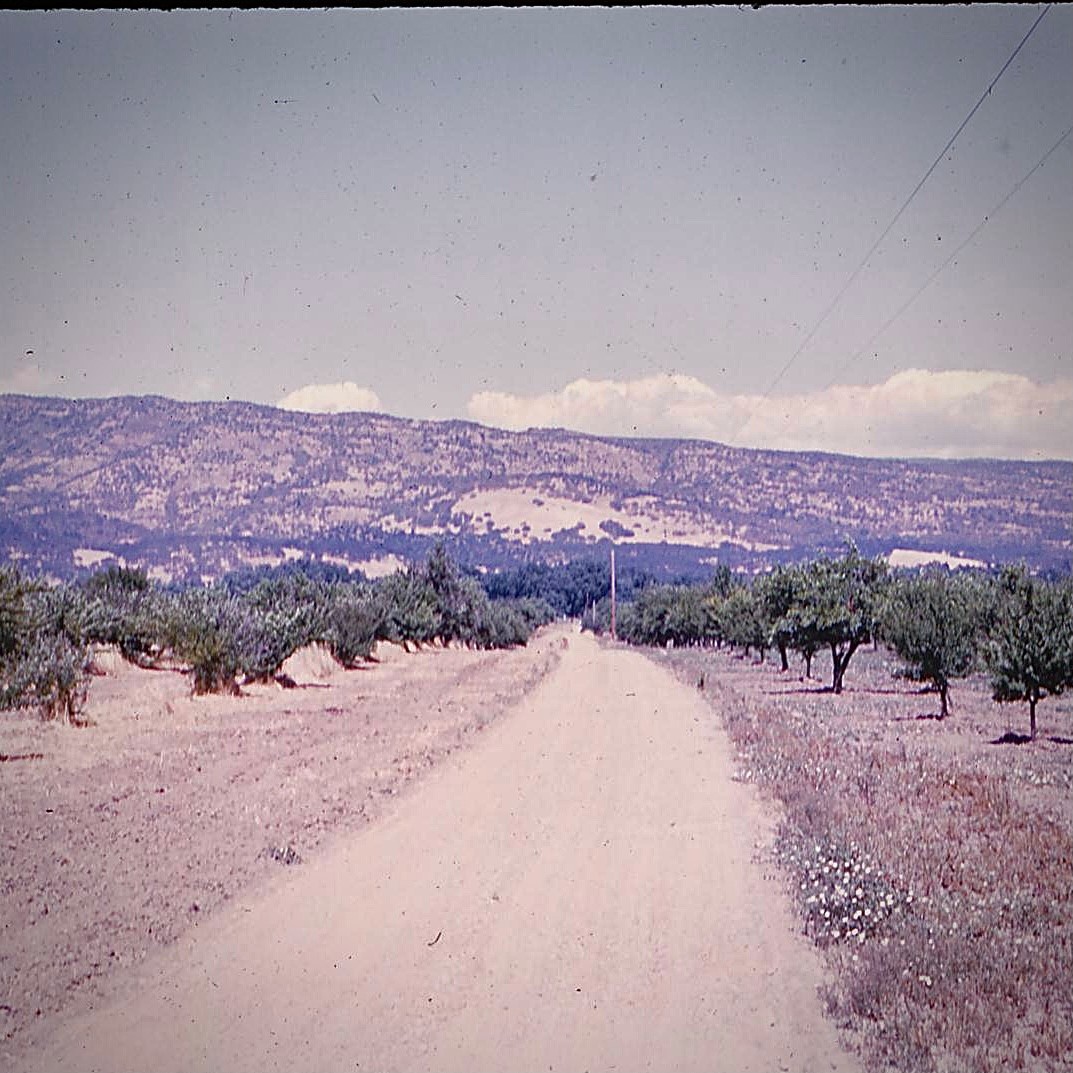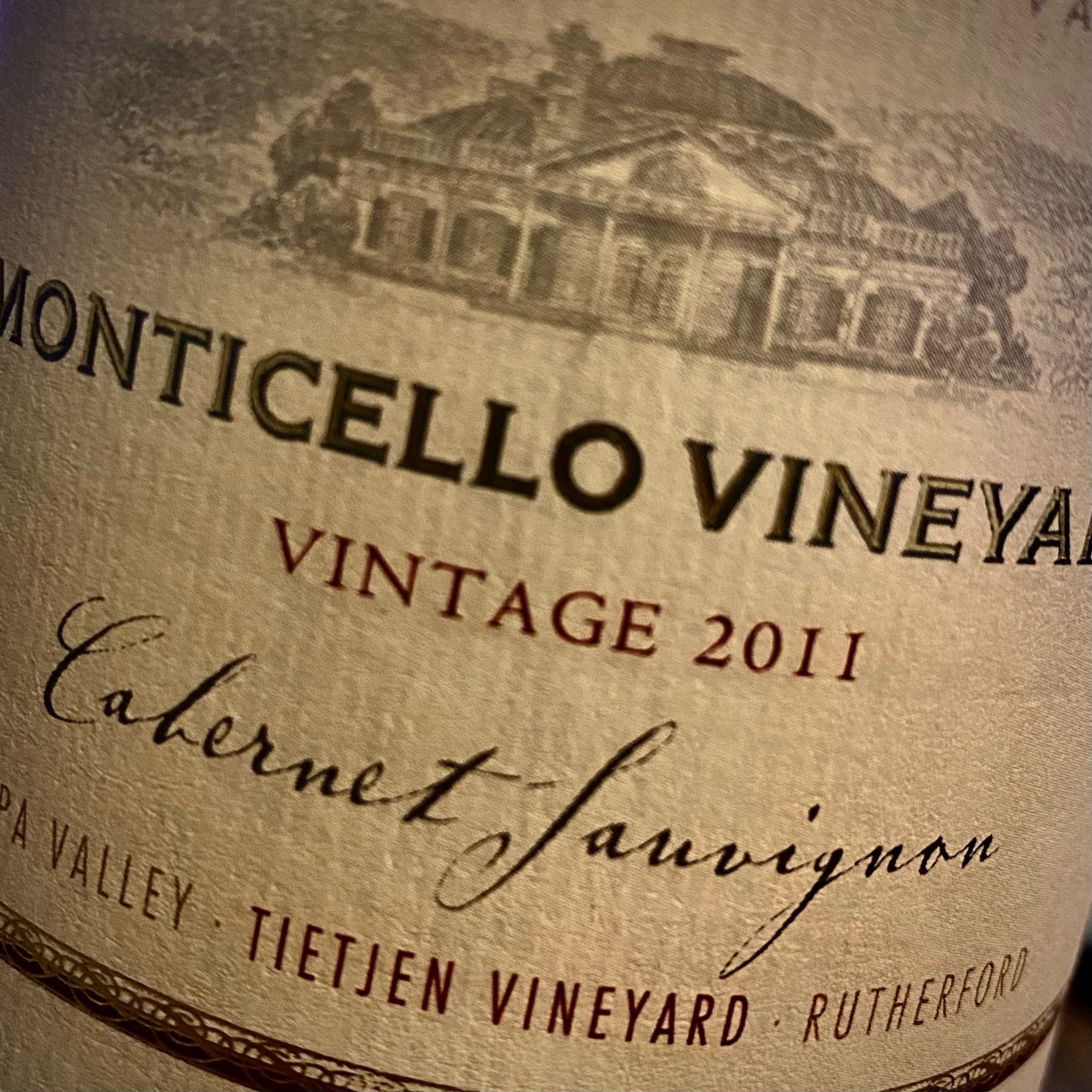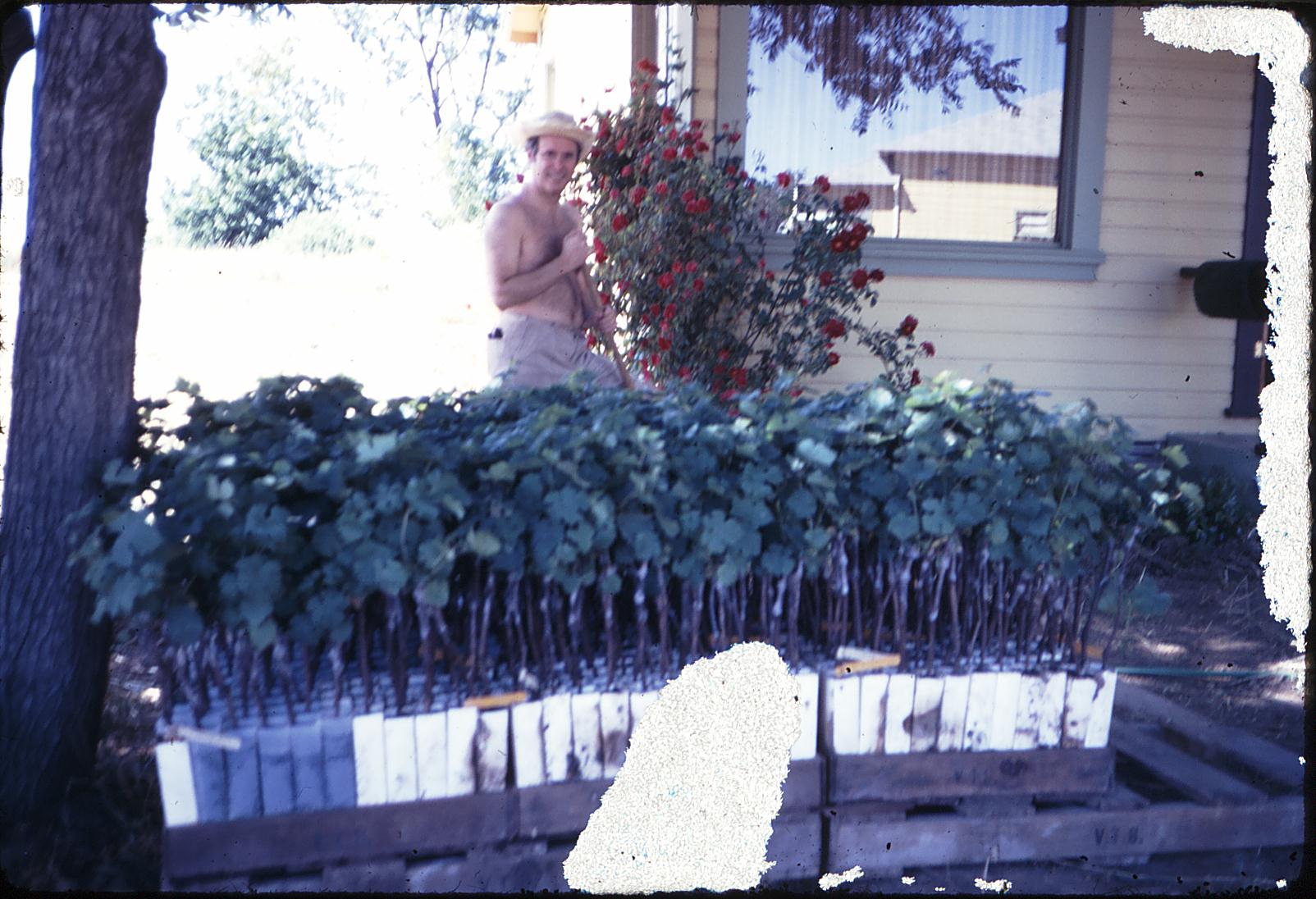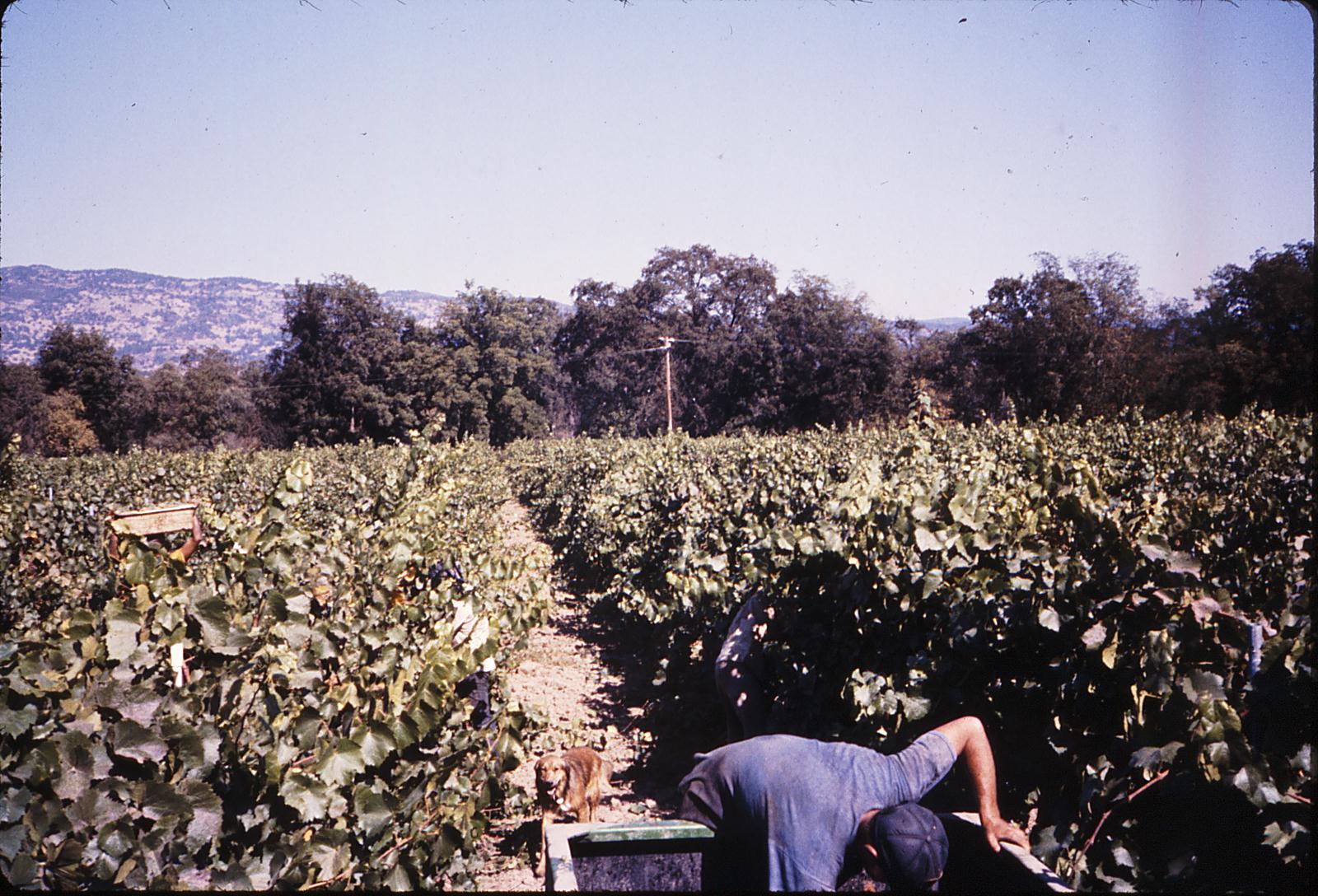ThrowBack Thursday : Mid-Late 1900s
Back in the mid-late 1900s, our dad was a successful entrepreneur in Southern California. He was ahead of the game, 'they' hadn't even come up with the word entrepreneur back then, but he was doing it anyway. He was a big fan of the wines from Burgundy, both red and white. He was a member of various tasting groups, including the Chevaliers du Tastevin. In the mid 1960s, he attended Pepperdine University to get his MBA. He wrote his thesis on how to start a winery in the Napa Valley. It was accepted, he received his MBA, and that thesis is the foundation of the business plan that Monticello Vineyards has operated under for 50+ years.
I remember him enjoying his wine at dinner, always in moderation, but smiles and laughter. As a kid, something about the crystal decanters and the importance and discussion surrounding wine struck me as appealing, even though I didn't really understand why at the time. I could see at a very young age, it was a beverage that was different than any other on the table. Over the years, I grew to understand why wine holds such a spell over us, and admittedly, I myself am now deeply entranced.
In the late 1960s, our dad was venturing up to Napa Valley, and now he had in his mind that he wanted to coalesce two of his interests ... his deep appreciation of wine, and an internal sense of getting back to the earth, this latter interest largely driven by a history of farming in our family that dates back many generations to Virginia, and later in Illinois.

What pop saw in 1969 that made him think his dreams of growing world class Pinot Noir and Chardonnay in Napa Valley could be realized.
Around 1969, he came across an old prune orchard for sale in the southern end of Napa Valley, now known as the Oak Knoll District. It was a dry, dusty old prune orchard, but he had vision and a plan, and he could see not just what it was, but what it could be. This old prune orchard was about as far south in Napa Valley as anyone would consider planting winegrapes in 1969. Cerneros and Coombsville were not yet established as winegrowing regions. He wanted to be in the souther end of the valley, because it was cooler, enjoyed the daily breezes from the bay, and gave him the best opportunity to grow world class Pinot Noir and Chardonnay in Napa Valley. The property was situated next to the river, which was appealing as well. In the early years, we grew Pinot Noir, Chardonnay, Sauvignon Blanc, Chenin Blanc and Gewurtraminer on the estate. All of the Cabernet Sauvignon back then was grown upvalley in St. Helena, Rutherford, Spring Mountain, Yountville.
Dear Ol' Dad ... although not so old, sometime around 1970ish.
Our varietal plantings have shifted over the course of 50 years, we now grow Cabernet Sauvignon, Cabernet Franc and Merlot on our vineyards in Oak Knoll District. We don't have any Sauvignon Blanc, Chenin Blanc or Gewurztraminer planted, but I would certainly love to put in a few rows of each on our next planting cycle! Being true to Dear Ol' Dad, we still grow a pretty good amount of Pinot Noir and Chardonnay on the estate. We have multiple clones of each in different blocks, and bottle a small amount of isolated block and clonal offerings each vintage, for example our Corley Chardonnay 'Block 1, Clone 96', or our Corley Pinot Noir 'Block 2, Clone 777'. When people politely ask why we're growing Pinot Noir and Chardonnay in 'Cab Country' ... well, some things matter more than others, and our dad's vision is one of those things. Cheers to Dear Ol' Dad on this Throwback Thursday!
If you'd like to enjoy a glass of our single vineyard, single block, single clone offerings, please call us at (707) 253-2802, or visit us at www.corleyfamilynapavalley.com
10 Years Later ... Looking Back on 2011 'Tietjen' Single Vineyard Cabernet Sauvignon
It's always enlightening to look back and see where we've been, in life and in winegrowing. We're fortunate as family winegrowers that we've been able to work with the same vineyards across Napa Valley for decades. It allows for a perspective of a single vineyard over a long period of time. We've worked with the same five vineyards, that span almost the length of Napa Valley, for most of the last 50 years. Working with a vineyard year in and year out provides perspective, as we inevitably will have better and worse vintages than others.
The 2011 vintage was one that stood out this millenium. It was a challenging growing season, in large part due to untimely rains close to harvest. This had many winegrowers working a little harder that season than usual. The vintage took a little of bit from the media at the time, and while it was indeed a difficult vintage, I think it was painted with too broad a critical stroke.
At Monticello, we like to focus on destination, not navigation. In 2011, our destination remained the same ... to make wonderful wines. That vintage made the path a little more difficult to navigate, but we embrace the journey! In winemaking, as in life, sometimes removing the negatives is the first step towards finding the positives. This was certainly the case in 2011. We sorted the fruit in the vineyard, we sorted the clusters on the crush pad, we sorted the grapes after they were destemmed. After we were done sorting, we sorted some more! All sorts of sorting! Removing the negatives to get to the positive core, which was the clean ripe, plump berries within the clusters.

We've been enjoying a lot of the wines from 2011 this year, as it's fun to look back 10 years to see how the wines are doing, especially with our single vineyard Cabernet Sauvignon bottlings. Over the last month or so, we've been enjoying a fair bit of the 2011 Tietjen Vineyard Cabernet Sauvignon. This vineyard is on Niebaum Lane in Rutherford, and has been hallmark single vineyard bottling for us for decades. At ten years, and with about 30 minutes in a decanter, this wine is singing! The aromas are deep, with blackberry, plum and a nice beam of vanillin oak in the background. On the palate, the wine is smooth as silk, as the tannins have evolved wonderfully over the last 10 years.
We've always been very good about setting aside some wines, and we do have some of the Tietjen Vineyard Cabernet Sauvignon 2011 still available. If you're interested in trying this wonderful vineyard at 10 years, please call us at the winery (707) 253-2802, or check in with us online at www.corleyfamilynapavalley.com/wines
California Sprawl
When we were kids, I used to love going to the vineyard with our dad. With the winery under construction, and the young vineyards in their resplendent California Sprawl, it was an exciting time for the 'grown-ups', and a fun place for us kids. I was 10 years old when the winery was built, and wine and grapes didn't mean much to me at that time, although I had a great admiration for our dad ... he was a builder, visionary, and creator, and even my young eyes could see and appreciate that.
The land had been cleared of the old prune trees and black walnut trees back in 1970, and the vineyard was established and thriving. I think I recall hearing when I was young that the largest black walnut tree in California was just a little north of us, a bit further up Big Ranch Road. Big Ranch Road was a fairly quiet country lane back then, and our dad knew all the neighbors up and down the road, and by extension, so did we.
Back then, vineyards didn't look like they do now. They used to grow more wildly, in what was known as 'California Sprawl'. The spacing between vines was much broader, sometimes planted 8' x 12' apart. The tractors were big, and the valley bins that the grapes were picked into were also big, holding 2+ tons of grapes each, and they were usually tipped into a big grape hopper off of the back of a flatbed. It was very different than the typical vineyard in Napa Valley now, which is usually highly manicured, with much more fruit exposure, and a wall of leaves rather than a true canopy.
As a kid roaming around in the vineyard back then, it was fun hanging out under a California Sprawl. Since the vines were spaced so far apart and planted on pretty aggressive rootstocks, the vines would grow very aggressively, the shoots growing thick and strong across the wide rows, their tendrils ensnaring each other and creating a true canopy that you would go under. In the old days, you need to fight your way through the vineyard rows sometimes. The grapes were entirely underneath the canopy, with little to no actual sun exposure.
Over the years, viticulture has progressed towards tighter spacing in vineyards, smaller tractors, increasingly manicured vines, greatly increased fruit exposure. This all lends itself towards clean, wonderfully ripe California wines, which we love. I wonder, though, as we observe naturally increasing heat and less rain, if we might see a slight shift back towards more natural canopies to protect our fruit from the sun. We can see many vineyards protecting their fruit from the sun by hanging shadecloth over the grapes, but I remember seeing the old growers on our vineyard accomplish that with training and vine leaves.
As we celebrate fifty years of winegrowing in the Napa Valley, we are looking forward, but it is fun to reminisce about being a kid, hanging out under the sprawling grapevines 40 years ago.

